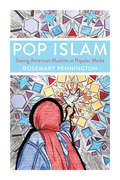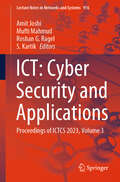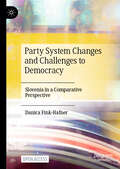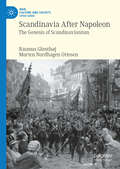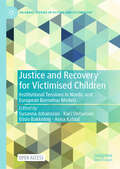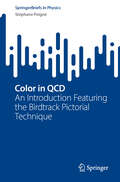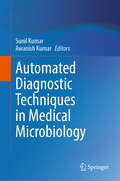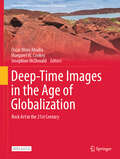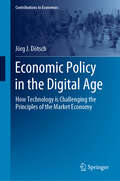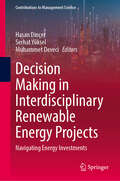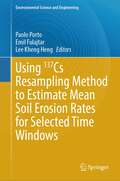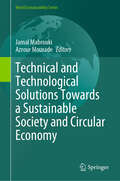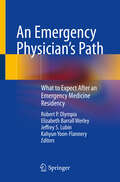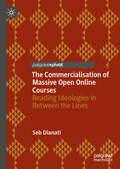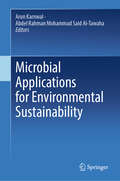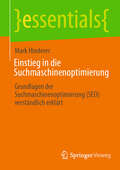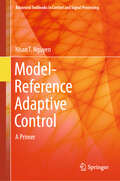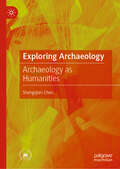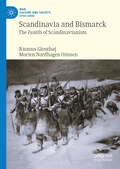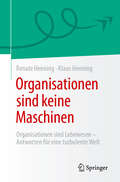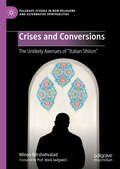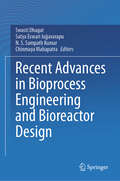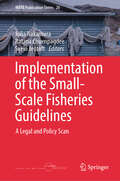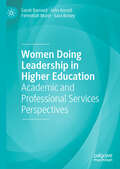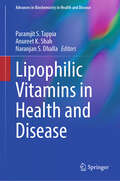- Table View
- List View
Pop Islam: Seeing American Muslims in Popular Media
by Rosemary PenningtonIn the West, Islam and Muslim life have been imagined as existing in an opposing state to popular culture—a frozen faith unable to engage with the dynamic way popular culture shifts over time, its followers reduced to tropes of terrorism and enemies of the state. Pop Islam: Seeing American Muslims in Popular Media traces narratives found in contemporary American comic books, scripted and reality television, fashion magazines, comedy routines, and movies to understand how they reveal nuanced Muslim identities to American audiences, even as their accessibility obscures their diversity. Rosemary Pennington argues that even as American Muslims have become more visible in popular media and created space for themselves in everything from magazines to prime-time television to social media, this move toward "being seen" can reinforce fixed ideas of what it means to be Muslim. Pennington reveals how portrayals of Muslims in American popular media fall into a "trap of visibility," where moving beyond negative tropes can cause creators and audiences to unintentionally amplify those same stereotypes. To truly understand where American narratives of who Muslims are come from, we must engage with popular media while also considering who is allowed to be seen there—and why.
ICT: Proceedings of ICTCS 2023, Volume 3 (Lecture Notes in Networks and Systems #916)
by Amit Joshi Mufti Mahmud Roshan G. Ragel S. KartikThis book contains best selected research papers presented at ICTCS 2023: Eighth International Conference on Information and Communication Technology for Competitive Strategies. The conference will be held in Jaipur, India during 8 – 9 December 2023. The book covers state-of-the-art as well as emerging topics pertaining to ICT and effective strategies for its implementation for engineering and managerial applications. This book contains papers mainly focused on ICT for computation, algorithms and data analytics and IT security. The work is presented in three volumes.
Party System Changes and Challenges to Democracy: Slovenia in a Comparative Perspective
by Danica Fink-HafnerThis open access book focuses on the nexus between “party system stability” and “democratic consolidation”, using Slovenia as a case study. Its findings are presented from a comparative perspective to illustrate the commonalities and differences found in research on Central European post-socialist countries and former Yugoslav countries. On the one hand, Slovenia’s characteristics (including the characteristics of its transition to democracy) are far more similar to those of Central European post-socialist countries than Western Balkan countries. On the other, Slovenia shares some similarities with other parts of the former Yugoslavia – especially its experiences with the political system of socialist self-management, elements of a market economy under socialism, and war following the end of socialism (albeit the conflict in Slovenia was very short and rather mild in comparison to those in other parts of socialist Yugoslavia). Slovenia’s experiences with rapid but limited democraticbacksliding under the Janša government (March 2019–June 2022) were halted by the 2022 national election – in contrast to the more widely known cases of Hungary and Poland, where such backsliding took place incrementally over a longer period of time that included several election cycles.
Scandinavia After Napoleon: The Genesis of Scandinavianism (War, Culture and Society, 1750–1850)
by Rasmus Glenthøj Morten Nordhagen OttosenThis book explores the intellectual grounds of Scandinavianist ideology and its political development into a national unification movement. Denmark, Norway and Sweden were nearly annihilated during the Napoleonic Wars. The lesson learned was that survival was a matter of size. Whereas their union of 1814 offered Sweden-Norway geostrategic security tempered by fear of Russia, Denmark was the biggest territorial loser of the Napoleonic Wars and faced separatism connected to German nationalism in the duchies of Schleswig and Holstein. This evolved into a national conflict that threatened Denmark’s survival as a nation. Meanwhile, a new generation of Danes, Swedes and Norwegians had come to regard kindred language, culture and religion as a case for Scandinavian union that could offer protection against Russia and Germany. When the European revolutions of 1848 unleashed the First Schleswig War, the influence of Scandinavianism was such that it nearly turned into a Scandinavian war of unification.
Justice and Recovery for Victimised Children: Institutional Tensions in Nordic and European Barnahus Models (Palgrave Studies in Victims and Victimology)
by Susanna Johansson Kari Stefansen Elisiv Bakketeig Anna KaldalThis open access book contributes to ongoing discussions about how societies should respond to children who have experienced violence and abuse by delving into the Barnahus model: a multidisciplinary and co-located model whose aim is to provide both justice and recovery to victimised children. The promising model was first implemented in the Nordic region and is currently being diffused across Europe, although scientific knowledge about the model remains scarce: the Barnahus model’s potential for delivering holistic services, the various tensions and dilemmas involved in the model, and how dual mandate of Barnahus can be managed all require further research. Continuing from the volume Collaborating Against Child Abuse (2017) which examined the process of Barnahus’ diffusion in the Nordic countries, the current book digs deeper into the intrinsic institutional tensions of the model, as well as those that might arise during collaboration, in order to advance our understanding of what can be achieved through the model and thus improve the situation of child victims of violence and abuse. An institutional perspective is used in the book which is structured in four parts. The first three parts explore different types of institutional tensions –legal, organisational, and professional-ethical, while the fourth focuses on how these tensions may be balanced. The book’s authors chart this new phase in the diffusion and translation of the Barnahus model. Their analyses will provide valuable guidance to countries that are currently considering or are already implementing the model.
Color in QCD: An Introduction Featuring the Birdtrack Pictorial Technique (SpringerBriefs in Physics)
by Stéphane PeignéThis book introduces readers to the fascinating world of quantum chromodynamics (QCD) and quarks and gluons, the elementary constituents of protons, neutrons, and all hadrons. Specifically, it focuses on the color of quarks and gluons, responsible for their mutual interactions via the strong force. The book provides an elementary introduction to the birdtrack technique, which is a powerful tool for addressing the color structure of QCD in a pictorial way. The technique shows how quark and gluon colors are combined and mixed in QCD. The author discusses color conservation, shows how to project on color states of systems of quarks, antiquarks, and gluons, how to derive their color charges. The book is enriched with many exercises integrated in the text to learn by doing.This book is primarily intended for particle physics students, graduates, and researchers working in the field of QCD. However, it requires no specific prerequisites in QCD, so it may also be of interest to students of mathematics, as an illustration of the use of the birdtrack pictorial technique in representation theory.
Automated Diagnostic Techniques in Medical Microbiology
by Sunil Kumar Awanish KumarThis book will explore the knowledge of current diagnostic automation techniques applied in the field of clinical microbiology, tropical diseases, POCT, etc. There is no such type of book related to this topic. This book will help clinicians, microbiologists, and researchers to make diagnostic algorithms for infectious diseases and help them in early diagnosis. Automation in clinical microbiology has revolutionized routine practice in diagnostic cum research in medical microbiology. This book covers the recent updates and advances in diagnostic microbiology and provides new techniques related to Genomic, Proteomic, and metabolomics in microbiology. This book will intensely discuss the new and innovative automation techniques available for diagnosis in the microbiology laboratory. This book is more focused on automation techniques, which are used in the early detection of infectious diseases even caused by rare microorganisms. Furthermore, this book has complied with the chapters that provide insights to readers with comprehensive and usable knowledge on automation techniques in diagnostic microbiology.
Deep-Time Images in the Age of Globalization: Rock Art in the 21st Century (Interdisciplinary Contributions to Archaeology)
by Oscar Moro Abadía Margaret W. Conkey Josephine McDonaldThis open access volume explores the impact of globalization on the contemporary study of deep-time art. The volume explores how early rock art research’s Eurocentric biases have shifted with broadened global horizons to facilitate new conversations and discourses in new post-colonial realities. The book uses seven main themes to explore theoretical, methodological, ethical, and practical developments that are orienting the study of Pleistocene and Holocene arts in the age of globalization. Compiling studies as diverse as genetics, visualization, with the proliferation of increasingly sophisticated archaeological techniques, means that vast quantities of materials and techniques are now incorporated into the analysis of the world’s visual cultures. Deep-Time Images in the Age of Globalization aims to promote critical reflection on the multitude of positive – and negative – impacts that globalization has wrought in rock art research. The volume brings new theoretical frameworks as well as engagement with indigenous knowledge and perspectives from art history. It highlights technical, methodological and interpretive developments, and showcases rock art characteristics from previously unknown (in the global north) geographic areas. This book provides comparative approaches on rock art globally and scrutinises the impacts of globalization on research, preservation, and management of deep-time art. This book will appeal to archaeologists, social scientists and art historians working in the field as well as lovers of rock art.
Economic Policy in the Digital Age: How Technology is Challenging the Principles of the Market Economy (Contributions to Economics)
by Jörg J. DötschThis book addresses how digital technology is challenging the principles of the market economy and the consequences for economic policy. Applying the approach of the Freiburg School as a heuristic perspective, the study examines the concrete effects of digital technology on the price system and monetary policy, the openness of markets, the role of private property, and labour markets. It highlights the emergence of digital innovations such as digital currencies, digital goods, artificial intelligence, digital platforms and the sharing economy and discusses the challenges these innovations pose for economic governance and the development of adequate economic policy instruments. This comprehensive overview provides a basic understanding of the scope of the digital transformation and addresses a wide scale of important aspects of e.g. competition and trade policy, the impact of robotisation on labour market policy, and how economic policy must incorporate social aspects. The book appeals to scholars and students of economics, public management professionals, and anyone interested in the challenges of digitalisation in the context of economic policy.
Decision Making in Interdisciplinary Renewable Energy Projects: Navigating Energy Investments (Contributions to Management Science)
by Hasan Dinçer Serhat Yüksel Muhammet DeveciThis edited book presents a comprehensive analysis of the multidimensional aspects associated with decision making in renewable energy investment projects. It delves into the interplay between interdisciplinary studies, sustainability considerations, and circular economy principles within the renewable energy sector. By examining the impact of these interconnected domains, the book offers valuable insights into the challenges and opportunities inherent in decision making for renewable energy investments. The book is tailored to a diverse audience, including researchers, scholars, and professionals in the fields of renewable energy, sustainability, circular economy, and business management. It is equally suitable for graduate and undergraduate students studying environmental studies, renewable energy, sustainability, and related disciplines. Professionals working in the renewable energy industry, including project developers, investors, and policymakers, will find valuable insights to inform their decision-making processes. Additionally, engineers, economists, social scientists, and environmental consultants interested in interdisciplinary studies and their intersection with renewable energy will benefit from the book's comprehensive analysis.
Using 137Cs Resampling Method to Estimate Mean Soil Erosion Rates for Selected Time Windows (Environmental Science and Engineering)
by Paolo Porto Emil Fulajtar Lee Kheng HengThis book provides guidelines for using a new approach of resampling the Cs-137 radionuclide tracer which is used to estimate soil erosion rates. The Cs-137 resampling approach will improve significantly the use of the Cs-137 method for assessment of soil erosion, because resampling the radionuclide repeatedly (at least two times, but more sampling campaigns are possible) allows to avoid several methodological difficulties associated with Cs-137 method, namely the problems with small-scale spatial heterogeneity, the question of representativeness of reference site, reference samples, and inappropriate time extent of evaluated period. All these methodological problems are very important for reliability and accuracy of erosion rates estimated by Cs-137 method. If using single sampling approach, the small-scale spatial heterogeneity can be overcome by high number of sampling points, but this is time and labour demanding solution increasing the expenses of the erosion research. The representativeness of reference site is evaluated usually on the basis of expert judgement and knowledge of land use history of studied area, but this approach is often uncertain because the expert judgement can be subjective and the data on land use history is often not sufficient. Further, in many areas an appropriate reference site is not available, what limits the territorial extent of using Cs-137 method. The resampling approach offers its second sampling to be done in a proximate vicinity of the same points sampled during the first sampling campaign. A great advantage is the possibility to decide how long time windows should be investigated. Choosing the time schedule of first and second sampling allows to shorten the time window and adjust it to the study objectives. This is a great improvement of the Cs-137 method, because the time period since the Cs-137 fallout is still growing and thus if using the single sampling approach the results refer to still longer and longer time window(since the Cs-137 fallout until the sampling time), and this period (recently ca 60 years assuming the maximum Cs-137 fallout in 1963) is too long to represent stable land use, because land uses are changing over the time and having the same land use over six decades is rather rare. The improvement of Cs-137 method achieved by resampling approach is significantly contributing to understanding the erosion dynamics and estimating its rates under changing environmental conditions (such as land uses, weather), and it will bring a significant benefit to soil conservation programmes, because Cs-137 method is indispensable for assessing the medium and long term soil erosion rates, and this information is among the basic inputs needed for planning and designing soil conservation measures.
Technical and Technological Solutions Towards a Sustainable Society and Circular Economy (World Sustainability Series)
by Jamal Mabrouki Azrour MouradeResource depletion and ecological risks are more than ever at the heart of societal and economic debates. In the 1970s, the developed countries saw the Fordist growth regime crumble in parallel with the growing awareness of the ecological issue. Since the first industrial revolutions, technological dynamics have been the cause of many environmental problems, and there is a consensus on the diagnosis. Integrated technologies reduce resource use and/or pollution at source by using cleaner production methods. This generally leads to a reduction in the by-products, energy inputs and resources used by companies to produce goods.Integrated production technologies reduce negative environmental impacts at source by substituting or modifying cleaner technologies. Examples of integrated, or cleaner, production technologies are the recirculation of materials, the use of environmentally friendly materials (such as the substitution of water for organic solvents), etc. However, the implementation of integrated production technologies is often hampered by obstacles related to cost, coordination and skill inertia problems and to the productive organisation of companies. In addition to the high investment costs of new integrated technologies, additional barriers may emerge depending on the nature of the environmental problem and the type of environmental regulation in question.
An Emergency Physician’s Path: What to Expect After an Emergency Medicine Residency
by Robert P. Olympia Elizabeth Barrall Werley Jeffrey S. Lubin Kahyun Yoon-FlanneryA career in emergency medicine can be truly rewarding, despite the long hours and adverse conditions. The decision to embark on this journey typically starts during medical school, usually with the allure of resuscitations and life-saving procedures performed in the fast-paced environment of the emergency department. During an emergency medicine residency, the young physician is faced with career decisions that may involve working in a community or academic emergency department setting, or pursuing specialization through fellowship. Following residency and fellowship training, the emergency physician may decide to purely work clinically in an emergency department, or combine clinical responsibilities with administrative, education or research pursuits. This unique text provides medical students, residents, fellows and attending physicians with a comprehensive guide to be successful in a career in emergency medicine. Sections include the history of emergencymedicine, choosing a career in emergency medicine from a medical student’s point of view, pursuing fellowship and additional training, community and academic careers in emergency medicine, career options in emergency medicine, critical skills in emergency medicine, research/scholarship, being a teacher, and carving a path in emergency medicine. All chapters are written by experts in the field, representing emergency departments throughout North America.
The Commercialisation of Massive Open Online Courses: Reading Ideologies in Between the Lines
by Seb DianatiThis book critically examines the role of Massive Open Online Courses (MOOCs) in higher education, against the backdrop of rapid developments in online learning. Reporting on a method by which one could isolate ideologically charged words from websites, the author underlines the need to pause, question and understand the underlying motives behind MOOCs, and ask fundamental questions about their data use, commercial interests, and ability to provide ‘good’ education. With its step-by-step ideological analysis, the author challenges educators, policymakers, and students alike to reconsider the fabric of online courses and their associated platforms. The book will appeal to scholars of digital education and sociology, as well as scholars from the critical sciences.
Microbial Applications for Environmental Sustainability
by Arun Karnwal Abdel Rahman Mohammad Said Al-TawahaThis book focuses on the various applications of microorganisms for sustainable environment and the reduction of hazardous pollutants released in various forms, including xenobiotics, e-waste, pesticides, insecticides, plastic, heavy metals, paper waste, medical waste, textile dyes, and their impact on environmental and human health. The book involves a series of research reports that explain the application of microbes used to solve real-life issues raised due to changes happening in environment, including pollution, by covering applications, including the use of bacteria, fungi, microalgae and biofilm in the detection and degradation of crude oil, pesticides, dyes, e-waste, heavy metals and other pollutants. It also focuses on integrative strategies in the application of microbial nanomaterials for remediation of pollutant. This material will help environmental scientists and microbiologists to learn about existing environmental problems and suggest novel ways to control or contain their effects by employing various treatment approaches.
Einstieg in die Suchmaschinenoptimierung: Grundlagen der Suchmaschinenoptimierung (SEO) verständlich erklärt (essentials)
by Mark HindererBekommen Sie einen grundlegenden, aber umfassenden Überblick über die Arbeitsweise von Suchmaschinen und wie sie Inhalte von Websites auslesen und bewerten. Lernen Sie Möglichkeiten zur Optimierung der eigenen Website kennen und steigern Sie so die Besuchszahlen Ihrer Website. Wie optimiert man die eigene Website, um das Potenzial der Suchmaschinenoptimierung (SEO) auszuschöpfen und die Erwartungshaltung hinter der Suchanfrage so zu erfüllen, dass ein positives Nutzungserlebnis geschaffen wird? Welche Faktoren einer Website können zu einem Rankingverlust führen und sollten vermieden werden, um nicht dem Wettbewerb die bessere Position in den Suchergebnissen zu überlassen?
Model-Reference Adaptive Control: A Primer (Advanced Textbooks in Control and Signal Processing)
by Nhan T. NguyenThis textbook provides readers with a good working knowledge of adaptive control theory through applications. It is intended for students beginning masters or doctoral courses, and control practitioners wishing to get up to speed in the subject expeditiously. Readers are taught a wide variety of adaptive control techniques starting with simple methods and extending step-by-step to more complex ones. Stability proofs are provided for all adaptive control techniques without obfuscating reader understanding with excessive mathematics. The book begins with standard model-reference adaptive control (MRAC) for first-order, second-order, and multi-input, multi-output systems. Treatment of least-squares parameter estimation and its extension to MRAC follow, helping readers to gain a different perspective on MRAC. Function approximation with orthogonal polynomials and neural networks, and MRAC using neural networks are also covered. Robustness issues connected with MRAC are discussed, helping the student to appreciate potential pitfalls of the technique. This appreciation is encouraged by drawing parallels between various aspects of robustness and linear time-invariant systems wherever relevant. Following on from the robustness problems is material covering robust adaptive control including standard methods and detailed exposition of recent advances, in particular, the author’s work on optimal control modification. Interesting properties of the new method are illustrated in the design of adaptive systems to meet stability margins. This method has been successfully flight-tested on research aircraft, one of various flight-control applications detailed towards the end of the book along with a hybrid adaptive flight control architecture that combines direct MRAC with least-squares indirect adaptive control. In addition to the applications, understanding is encouraged by the use of end-of-chapter exercises and associated MATLAB® files. Readers will need no more than the standard mathematics for basic control theory such as differential equations and matrix algebra; the book covers the foundations of MRAC and the necessary mathematical preliminaries.
Exploring Archaeology: Archaeology as Humanities
by Shengqian ChenThis book looks inward to reveal and analyse problems in archaeology itself. The subject explored in this volume include: humanistic attributes of archaeology, various archaeological theory, challenges in the development of archaeology, China Archaeology paradigms and "Chinese School", responsibilities and status of archaeology in society, and prospects of Archaeology in China. With years of engagement in philosophy and theory studies, the author raised many bold questions and contributed unique and original views. While the archaeological circle remained tacit about -"Chinese School"- a term proposed by leading authority Professor Su Bingqi, the author bravely voiced that archaeology needs a "Chinese school". The "Chinese school" would facilitate both the reconstruction of cultural significance and the vying for international discourse power. The author also puts forward his thoughts on the current public archaeological fever, explaining and reflecting on the social responsibility, discourse power and how to present the archaeological discovery in a more accurate and efficient way to the public.
Scandinavia and Bismarck: The Zenith of Scandinavianism (War, Culture and Society, 1750–1850)
by Rasmus Glenthøj Morten Nordhagen OttosenThis book accounts for Scandinavian unification efforts in a time of great upheaval. The ideological repercussions of the European revolutions of 1848-1849 and the Crimean War (1853-1856) transformed both the international political system and nationalism into more ‘realist’ types. The First Schleswig War (1848-1851) having nearly turned into one of Scandinavian unification, the influence of Scandinavianism extended into the Danish, Swedish and Norwegian courts, cabinets and parliaments, attracting interest from the great powers. The Crimean War offered another window of opportunity for Scandinavian unification, before the Danish-German conflict over the duchies of Schleswig and Holstein nearly united Scandinavia upon the outbreak of the Second Schleswig War in 1864. The ultimate failure of Scandinavianism in its unification efforts was not predetermined, although historiography has made it appear as such. Napoleon III, Cavour and Bismarck all actively contributed to plans for Scandinavian unification, the latter even declaring himself as “very strongly Scandinavian”.
Organisationen sind keine Maschinen: Organisationen sind Lebewesen - Antworten für eine turbulente Welt
by Renate Henning Klaus HenningWachsende Komplexität und Dynamik prägt diese Welt und auch die meisten Organisationen. Die damit verbundene zunehmende Turbulenz besser zu verstehen und zu meistern ist Anliegen dieses Buches. Es zeigt, dass Organisationen keine Maschinen sind, sondern als Lebewesen verstanden und gesteuert werden sollten. Die Autoren beschreiben, wie diese systemische Denkweise seit Mitte der 1940er Jahre in vielen Disziplinen zu finden ist und als kybernetischer Ansatz vernetzt ist mit den biologischen, soziologischen, psychologischen, technischen und chaostheoretischen Ansätzen. Schon das erste Mal, als wir Mitte der 80iger Jahre mit dem OSTO-Ansatz in Berührung kamen, hat es uns gepackt. Von nun an begannen wir Organisationen als Lebewesen, als soziologische Einheit, zu sehen und nicht als statisches, militaristisches Gebilde. Damals war das für uns etwas völlig Neues. Die Organisation als ein Lebewesen, dass sich verändern kann und nicht stehen bleiben muss in vorgegebenen Mustern zu betrachten, das ist eine Chance für Menschen in Organisationen, die in der immer turbulenter werdenden Welt zurecht zu kommen wollen und müssen.Die Auseinandersetzung mit den komplexen Zusammenhängen der jeweiligen Zeit waren für uns immer schon von großem Interesse. Während Klaus Henning Elektrotechnik studierte und Renate Henning Pädagogik besuchten wir in unserer Münchener Studienzeit beide die Hochschule für Politische Wissenschaften in München. Diese Kombination prägt unser Denken und Handeln bis heute.
Crises and Conversions: The Unlikely Avenues of "Italian Shiism" (Palgrave Studies in New Religions and Alternative Spiritualities)
by Minoo MirshahvaladThis book explores the phenomenon of conversion to Shi'a Islam in Italy. It thoroughly examines the motivations behind this religious transition and scrutinizes the doctrinal characteristics that Shiism incorporates thanks to the contributions of Italian converts. The text emphasizes the significance of René Guénon’s Traditionalism as a pivotal factor in driving this religious mobility. Additionally, the book delves into the writings of figures such as Julius Evola, who introduced Guénon to Italy, shedding light on Evola’s impact on the youth in the post-World War II era. Furthermore, it evaluates the influence of Henry Corbin on this spiritual journey. To realize this study, between 2018 and 2023, Minoo Mirshahvalad employed multidisciplinary methods that integrated sociology and history.
Recent Advances in Bioprocess Engineering and Bioreactor Design
by Swasti Dhagat Satya Eswari Jujjavarapu N. S. Sampath Kumar Chinmaya MahapatraThis book provides insights into the recent developments in the field of bioprocess technology and bioreactor design. Bioprocess engineering or biochemical engineering is a subcomponent of chemical engineering, which encompasses designing and developing those processes and equipment that are required for the manufacturing of products from biological materials and sources, such as agriculture, pharmaceutical, chemicals, polymers, food, etc., or for the treatment of environmental process, for example, waste water. The main focus of this book is to highlight the advancements in the field of bioprocess technology and bioreactor design. The book is divided into various chapters briefing all aspects of bioprocess engineering and focusing on the advances in bioprocess engineering. The book summarizes introduction to bioprocess technology and microbiology, isolation and maintenance of microbial strains, and sterilization techniques for advanced-level students and researchers. Different models depicting kinetics of microbial growth, substrate consumption, and product formation are discussed. The applications of enzymes have increased tremendously and therefore understanding their metabolic pathways to increase yields is also briefly discussed. The calculations of mass and energy balances associated with entropy changes and free energy. This book also covers the approaches for handling different types of cell cultures and current advancements in the area of bioprocess strategies for different culture types, which scientists and researchers working in the different cell cultures can refer to. The downstream processing of various industrially important products is also a part of this book. Apart from that, the process economics which ensures the feasibility and quality of any biological process is also dealt with as the last section of the book.
Implementation of the Small-Scale Fisheries Guidelines: A Legal and Policy Scan (MARE Publication Series #28)
by Julia Nakamura Ratana Chuenpagdee Svein JentoftThis book provides a transdisciplinary assessment of multiple countries’ legal and policy frameworks vis-à-vis the Voluntary Guidelines for Securing Sustainable Small-Scale Fisheries in the Context of Food Security and Poverty Eradication, adopted in 2014 by the Committee on Fisheries of the Food and Agriculture Organization of the United Nations. Based on an appraisal framework used to facilitate the unpacking of those frameworks, this book collects country experiences and regional perspectives on a range of cross-cutting issues underpinning the protection of the rights and the promotion of justice for small-scale fishers and their communities.This book aims to be the first collection to present a systematic and in-depth assessment of existing national legal and policy frameworks vis-à-vis the SSF Guidelines. This assessment is done through the transdisciplinary and collaborative work of researchers, governments, and civil society organizations for the analysis of the cross-thematic questions, which the contributors of this book aim to address. Firstly, what are the relevant laws and policies that matter for securing rights of small-scale fishers and their communities? How are small-scale fisheries defined by national laws and policies? How are small-scale fisheries treated (i.e., specifically or generally) in these instruments? Are there specific provisions and references to small-scale fisheries or any of its associated terminologies (e.g., artisanal, subsistence, traditional, indigenous)? Secondly, how the relevant instruments address the 8 small-scale fisheries key issues outlined in that rapid appraisal study? What are the strengths and gaps in these instruments? Do they address issues that are not covered by the SSF Guidelines? Do they contribute to clarifying other legal issues that are relevant for sustainable small-scale fisheries? Finally, since the book also aims to explore the accessibility of these legal and policy instruments for those to which they matter the most (the small-scale fishers), the following questions were also considered: What challenges do they face in knowing and understanding the relevant laws and policies in place? Which tools, measures and processes are available in the countries to ensure small-scale fishers can claim for their rights? To what extent judicial courts have recognized and/or granted rights to small-scale fishers?Chapters 11 and 20 are available open access under a Creative Commons Attribution 4.0 International License via link.springer.com.
Women Doing Leadership in Higher Education: Academic and Professional Services Perspectives
by Sarah Barnard John Arnold Fehmidah Munir Sara BosleyThis book outlines in-depth the findings of a five-year longitudinal mixed methods study with academic and professional services women working in higher education in the UK and the Republic of Ireland. Key themes in the book include women’s engagement in leadership, careers in higher education, work and stress, women-only leadership programmes, intersectional perspectives that shine a light on differential experiences of women and the gendered culture of higher education. The book outlines several significant implications for women working in higher education, for those managing higher education institutions (HEIs), and for those involved in higher education policy development.
Lipophilic Vitamins in Health and Disease (Advances in Biochemistry in Health and Disease #28)
by Paramjit S. Tappia Anureet K. Shah Naranjan S. DhallaThe concept of “vital amines” as essential nutrients was introduced over a century ago by Dr Casimir Funk. It was suggested that there is a family of organic substances that are required in minute amounts and essential for life. The increase in incorporation of vitamins and supplementation in routine dietary practices is expected to increase. In fact, it has been estimated that 60% of worldwide consumers are taking vitamin supplements on a daily basis, a trend that will most likely rise across the world.This book brings together international experts in the field of vitamins for human health and disease, to update and integrate current understanding on the effects of different lipophilic vitamins on cellular, metabolic and molecular biochemical reactions with respect to different pathophysiological conditions including cardiovascular disease, cancer, metabolic defects, inflammatory and immune diseases. This book is uniquely positioned as it focuses on the biochemistry and molecular biology of lipophilic vitamins in diverse cell systems in relation to human health and disease.The book will certainly stimulate and motivate biomedical researchers and scientists to further explore the relationship between lipophilic vitamins and biological processes, as well as serve as a highly useful resource for nutritional investigators, health professionals, medical students, fellows, residents and graduate students. We hope that the reader will gain knowledge and further understanding of the importance of lipophilic vitamins. The novel insights provided by the contributing authors will assist in advancing preventive medicine worldwide as well as bring forward knowledge that may help in the use of lipophilic vitamins as adjuvant to therapeutic strategies for human disease.
